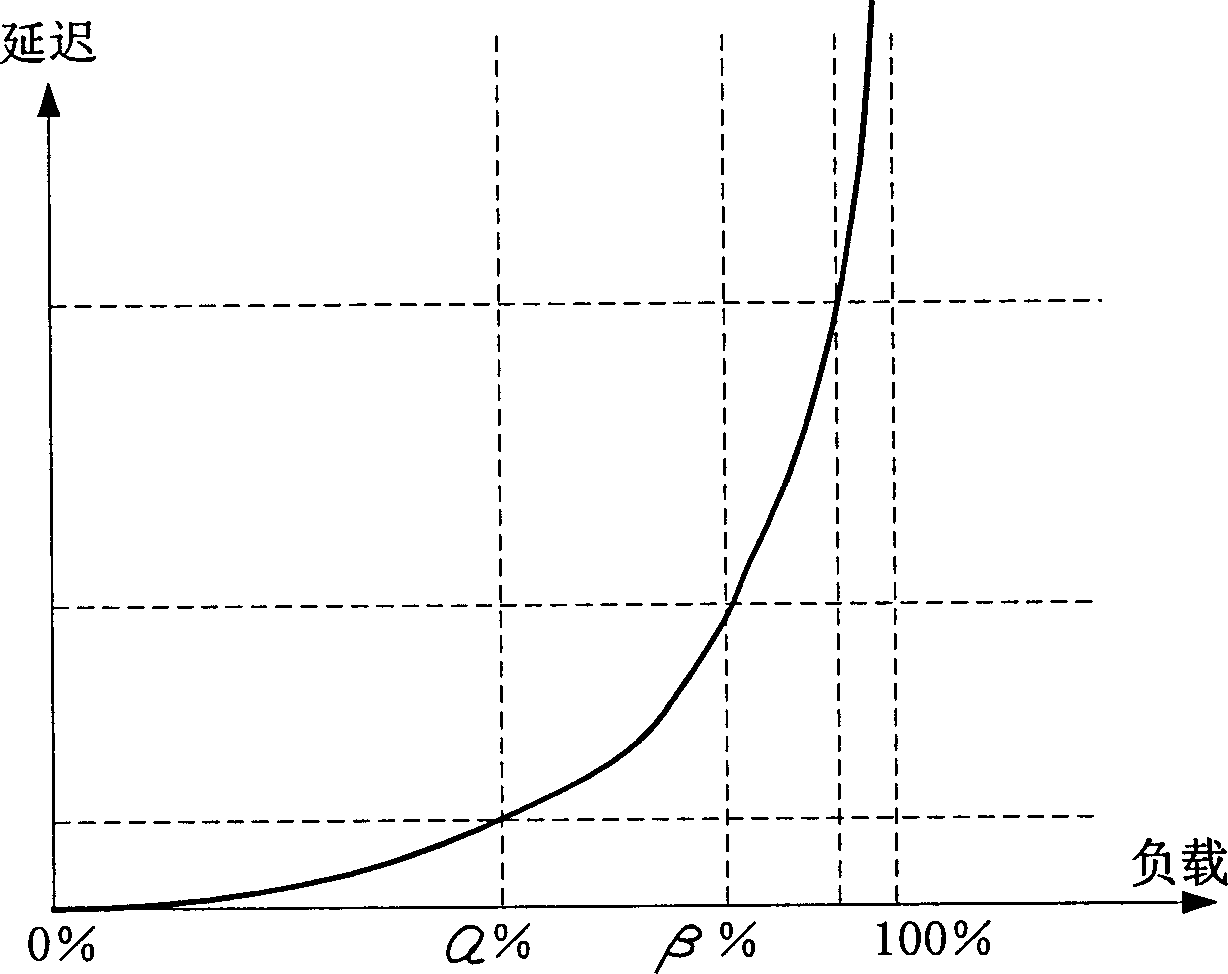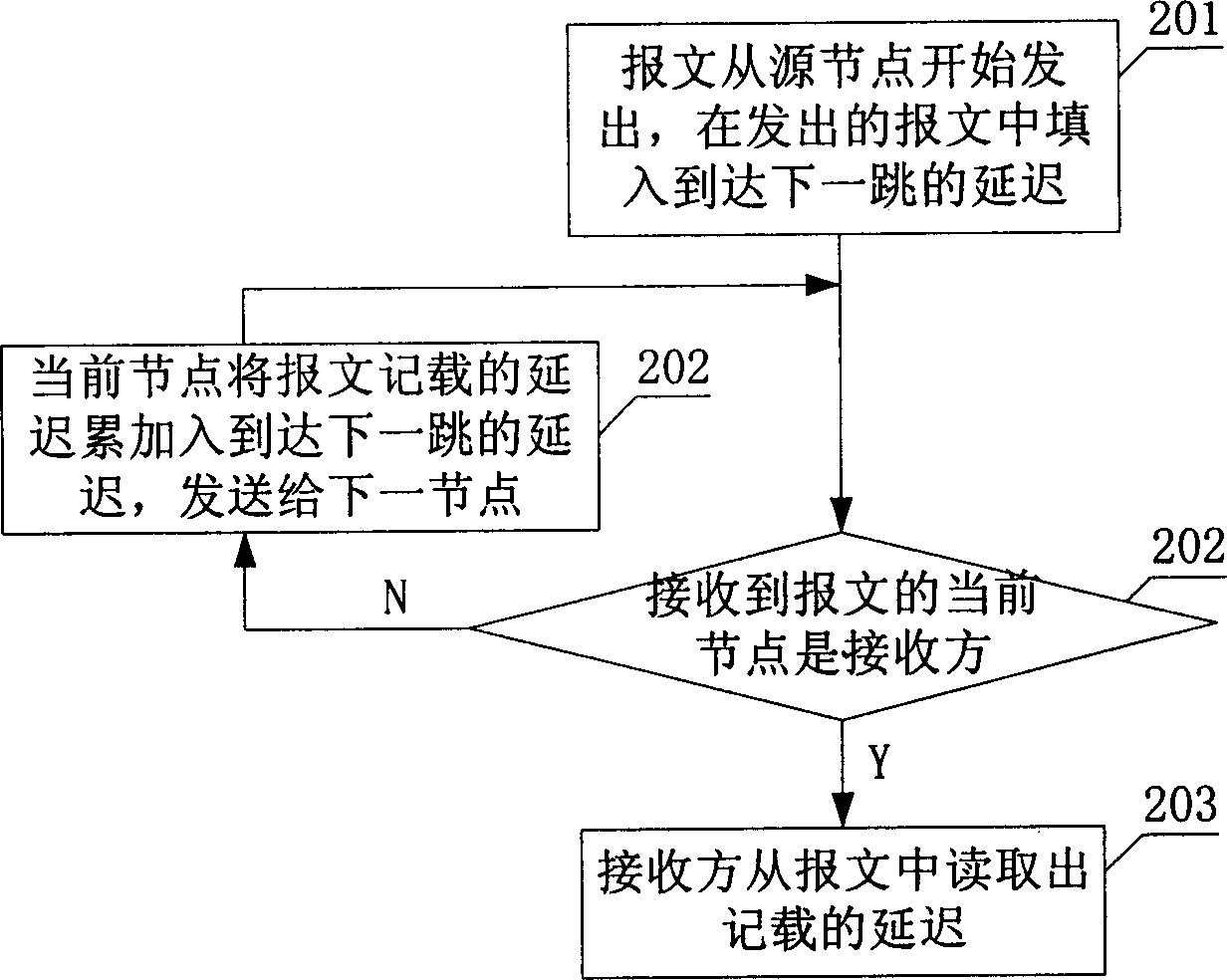One-way delay measuring method
A measurement method, one-way delay technology, applied in error detection/prevention using signal quality detectors, digital transmission systems, electrical components, etc., can solve delay differences, one-way delay errors, and cannot guarantee one-way delay measurement accuracy and other issues to achieve the effect of maintaining low cost and low complexity
- Summary
- Abstract
- Description
- Claims
- Application Information
AI Technical Summary
Problems solved by technology
Method used
Image
Examples
Embodiment approach 2
[0040] According to the idea above, the present invention can also be implemented in the second embodiment below, including:
[0041] The first step: the message is sent from the source node, and the node ID and the delay D to reach the next hop are filled in the message 2 = L 1 / r 1 +p 1 .
[0042] Second step: the next node j refers to the method in step 202 to obtain the delay (T j -R j )+L j / r j +p j , record in the message, and add the ID of node j; then send it to the next node. The execution steps of the next node are the same as this step.
[0043] Step 3: When the message arrives at the receiver, each node ID and corresponding delay can be read from the message to obtain the delay distribution, and the sum of all delay records can be calculated to obtain the one-way delay.
[0044] Based on the above two embodiments, the two embodiments can be combined to further obtain the following embodiment three, which is briefly described:
[0045] The first step: ...
PUM
 Login to View More
Login to View More Abstract
Description
Claims
Application Information
 Login to View More
Login to View More - R&D
- Intellectual Property
- Life Sciences
- Materials
- Tech Scout
- Unparalleled Data Quality
- Higher Quality Content
- 60% Fewer Hallucinations
Browse by: Latest US Patents, China's latest patents, Technical Efficacy Thesaurus, Application Domain, Technology Topic, Popular Technical Reports.
© 2025 PatSnap. All rights reserved.Legal|Privacy policy|Modern Slavery Act Transparency Statement|Sitemap|About US| Contact US: help@patsnap.com



